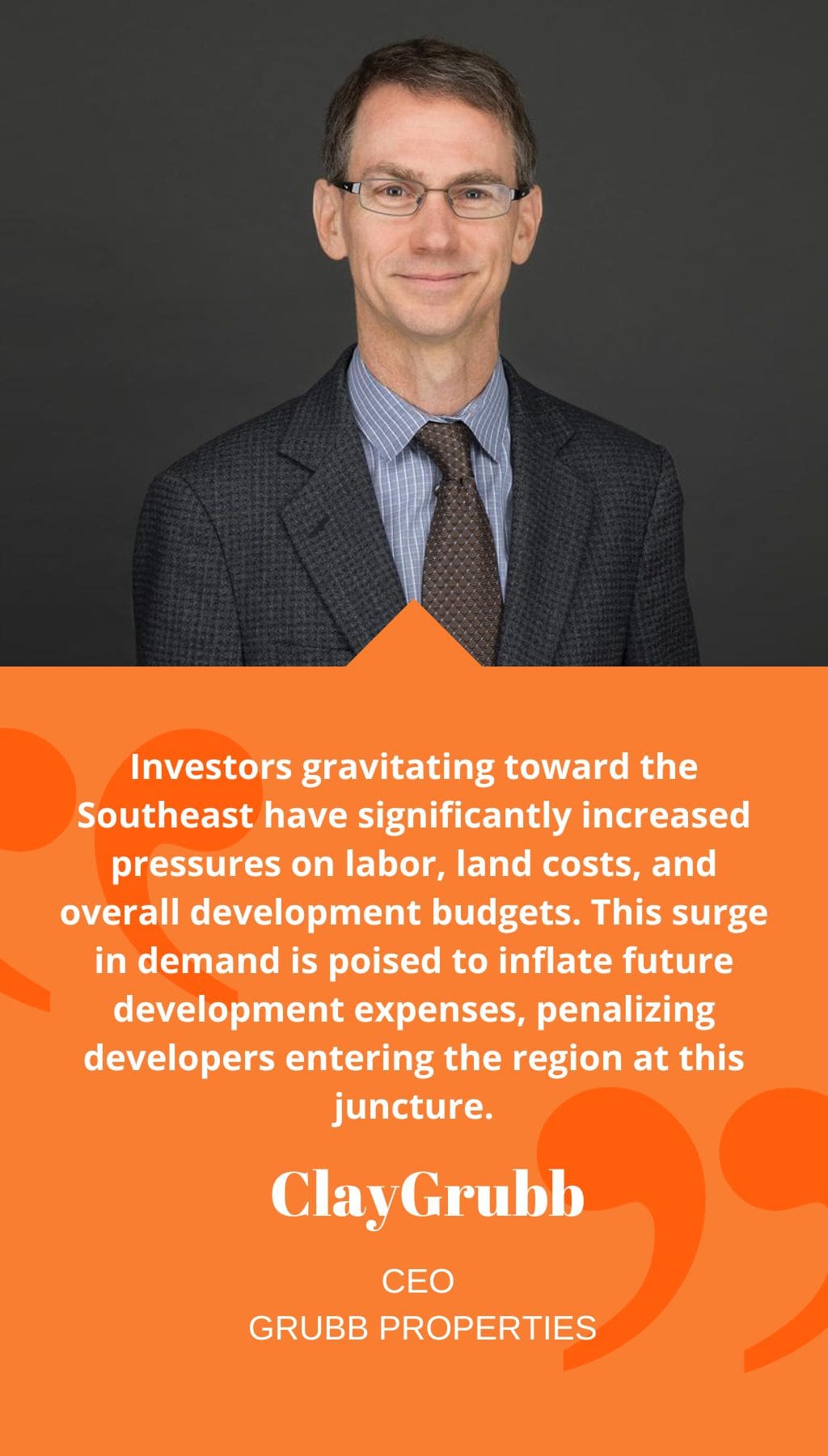
- USA | 10 June 2020

What significance did 2020 hold for Grubb Properties? How did the company adapt its investment and development strategies within the multifamily sector?
At Grubb Properties, we proactively prepare for unforeseen events even during prosperous times, ensuring we have the resources and flexibility to take strategic actions when unexpected challenges arise. Though the pandemic wasn’t something we predicted, our preparation was instrumental in navigating it effectively.
On a managerial front, alongside swiftly implementing measures to safeguard the health of our employees and residents, we promptly incentivized timely rent payments and worked closely with residents facing financial hardships. As a result, we concluded 2020 with record-high occupancies and net effective rents. The pandemic underscored the acute need for more affordable housing, particularly for the essential workforce. Recognizing this, combined with the anticipated surge in demand due to low interest rates, we expedited construction contracts for our development projects, especially in the Southeast.
Investors gravitating toward the Southeast have significantly increased pressures on labor, land costs, and overall development budgets. This surge in demand is poised to inflate future development expenses, penalizing developers entering the region at this juncture.
In the wake of the pandemic, which markets did you prioritize?
The pandemic opened doors to certain gateway markets like Los Angeles and New York. We recently established an office in San Jose and expanded our presence in New York to capitalize on these opportunities.
Many of these markets are among the most financially burdened cities in the nation, making them ideal for our Link Apartments product. Hence, we’re extending into these resilient gateway markets due to the significant investment prospects they offer. Simultaneously, we’ve maintained our investment and development focus in robust markets such as Charlotte and Atlanta, experiencing substantial population growth and sustained housing demand.
What motivates Grubb Properties’ investments in Charlotte and Atlanta?
Our interest stems from the diversification of local economies and job markets in these cities. Moreover, we value the strides they’re taking in alternative transportation initiatives like bike trails and light-rail systems.
Could you elaborate on Grubb Properties’ essential housing strategy?
Essential housing bridges the gap between affordable and luxury housing, catering to individuals earning 60 to 140 percent of the area median income. We implement 59 proven methods, such as innovative site acquisition and tax incentives, to drive value. For instance, we focus on six highly efficient floorplan types replicated across our communities, setting us apart from an industry norm that often exceeds 25 unit types.
Tell us more about Charlotte’s first car-free residential property and its alignment with affordability plans and your essential housing strategy.
Parking poses a significant hurdle to affordable housing. Our multifamily project in Charlotte, featuring 104 units with half designated as affordable for households earning 80 percent of the area median income, provides only six parking spaces. Situated along a greenway connecting to downtown Charlotte, it includes a top-notch cycle center and is close to various public transit options, enhancing accessibility.
Achieving the affordable set-aside without public subsidy is possible due to reduced parking costs, which could otherwise amount to $30,000 per space. Additionally, by enabling a car-free lifestyle, residents can potentially save the average $9,000 annual cost of car ownership, allocating it to other priorities.
Was the office building conversion in Smyrna, Georgia, prompted by the pandemic or part of the initial plan?
Acquiring office buildings with excess land for parking has long been part of our multifamily development strategy. This approach, employed in Smyrna, essentially grants us developable land at no cost, transforming underutilized parking lots into vibrant communities.
Similarly, in Charlotte’s Link Apartments Montford project, we repurposed two office buildings with ample parking into multifamily communities, fostering a 24-hour living environment.
What’s next for the multifamily markets in Charlotte and Atlanta? Does Grubb Properties plan further expansion in these metros?
We’re rapidly expanding in both markets, evident in projects like Smyrna’s recent approval by the city council. In Atlanta, we’ve completed Link Apartments Grant Park and plan to convert an existing multifamily project on Memorial Drive into a Link Apartments community soon.
In Charlotte, our ongoing 500-plus unit Link Apartments community in Montford Park and an upcoming similar-sized project in NoDa reflect our commitment to these markets, which appeal to Millennials and Gen Zers and are projected to sustain rapid growth.














